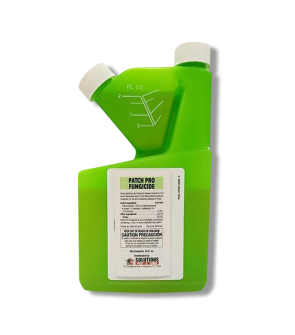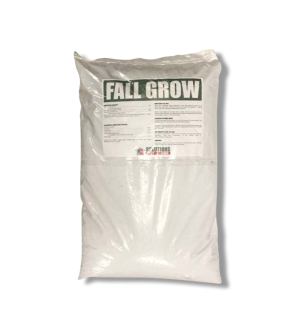Gain access to personalized product screening, the best pricing, rewards, and more!
Most Effective Products
How to Prevent Fungal and Disease Growth in Lawns During the Fall and Winter
This page is a general maintenance program to prevent mold, fungal, and other disease growth in lawns during the fall and winter seasons. By using the products and methods suggested in this article, you can control disease growth in lawns. Follow this DIY guide and use the recommended products to achieve 100% improvement in your lawns during the fall and winter seasons.
Many different diseases can take place not only during the summer but also during the fall and winter seasons. These diseases can range from white mold, pink snow mold, snow mold, Pythium blight, and many others. Typically, the first sign of disease with any fungal, mold, and others is discoloration, matted grass, or dead turf.
Often, homeowners will ask how mold, fungi, or diseases grow on their lawns during the fall and winter. Your lawns could have these diseases due to improper mowing, over-fertilization, over- or underwatering, the wrong type of fertilizer being used, or current weather conditions such as consistent rainfall, which is needed for the growth of fungus, mold, and other diseases.
Treating your lawn before the fall and winter seasons can lessen the amount of products used in the fall. Refer to the steps and products listed in this DIY guide to prevent the growth of fungi or diseases that may emerge during the spring.
Treatment for Grass Funguses, Mold, and Diseases
Before proceeding with treatment, you will need to determine if your grass is dormant or dead during the fall and winter seasons. The simplest way to determine if your turf is dead or alive is to perform the tug test. To perform the tug test, you will grab a small handful of brown turf and pull. If it comes out easily, then it is dead, but if there is some resistance, then the turf may be dormant.
Once you confirm that your turf is dead or dormant, you can continue with the following steps and products. When handling or applying herbicide products, you must wear the appropriate personal protective equipment (PPE).
Mow as Needed

Keep the turf higher than 3 inches before mowing. Lawns maintained at a height of 3 inches or more will promote deeper root growth in cooler weather conditions.
If weather conditions are consistently cool, mowing will need to be reduced to no more than once a month or ceased for warm-seasoned lawns. Usually, early November is the best time frame to cease mowing activity for warm-seasoned grasses. When the weather stays warm or higher than 50 degrees Fahrenheit, cool-seasoned grasses must be reduced to once a month. This mowing schedule may also be seen as early November.
A good rule to remember is that turf covered in snow or ice should not be mowed, as the blades cannot cut it.
Aerate Lawns to End of September

One of the best things to do for lawns is to aerate them before they reach their period of active growth. For either grass type, the timing will be at the beginning or end of September since this is known as the beginning of fall.
Like dethatching, aeration will help lawns to remove dead patches of grass. The exception to dethatching is that aeration will penetrate the soil with several small holes to loosen the earth underneath the turf, enabling air, water, and nutrients to move more easily.
For best results, this process should be applied prior to fertilization to allow the nutrients to reach further to the turf roots. This will help lawns become fuller and stronger in the fall, winter, and spring.
Fertilize Your Lawn Until November

Lawns that do not receive enough nutrients tend to become weaker, leading to disease growth. To strengthen your turf against these diseases, you will need to apply a fall fertilizer appropriate for your turf type. These turf types will fall into warm-seasoned grasses like St. Augustine Grass or cool-seasoned grasses like Kentucky Bluegrass.
You may fertilize your lawn from September to November to provide the appropriate level of nutrients to decrease disease activity. This fertilization schedule will vary depending on whether you have cool-seasoned or warm-seasoned turf. We recommend fertilizing either grass type with a fall fertilizer like Solutions 8-12-16 Fall Grow Fertilizer at the beginning of September.
Applying fertilizer during this period will avoid excessive turf growth during the cooler season and prevent cool-season grass from growing during the warmer spring months. If fertilized after this month, the grass is susceptible to becoming dead from weather conditions and may not be able to enter its period of dormancy.
For a general application, you will use 5 lbs. of Solutions 8-12-16 Fall Grow Fertilizer per 1,000 sq. ft.
Load your push spreader with the appropriate amount of product and begin at the corner of your treatment area. Walk steadily around the entire edge of the treatment area, then back and forth across the middle to cover the center space. Once finished, water the lawn with an inch of irrigation at least 1 to 2 days after fertilization.
Water Your Lawns as Necessary
The average amount of lawn watering throughout the year is an inch of irrigation. Despite the season, the best time to water is early morning. This will give your lawn enough time to process the water into its roots without excessive pools or standing moisture during the night.
Most fungi and diseases thrive and grow in moist conditions. However, if left un-watered, lawns become weaker and dry, leading the grass to become subjected to diseases. The best thing to do is to deeply water your water once a week with an inch of irrigation in the early morning.
Be advised that dormant lawns receiving more than an inch of irrigation during the fall and winter seasons may awaken from dormancy. Warm-seasoned lawns that awaken during the late fall and winter seasons can die from cooler weather conditions.
Treat Existing Fungal and Disease Activity
There can be fungal, mold, and other disease growth in the cooler and sometimes moist conditions of the fall and winter seasons. Treating your diseased lawn with a liquid fungicide will help the product seep further into the root zone, providing more residual and preemptive control of disease activity.
We recommend using Patch Pro since it is formulated as a liquid product with the active ingredient propiconazole 14.3%. This means that it will penetrate from the tissue to the root zone of the afflicted plant for longer periods of time.
Determine how much Patch Pro to use by measuring the square footage of the treatment area. To find this, measure the length and width of the treatment area in length, then multiply (length X width = square footage).
A general application of Patch Pro can be mixed between .5 to 4 oz. of product per gallon of water per 1,000 sq. ft.
To mix, fill a backpack sprayer or handheld pump sprayer with half the water, then the appropriate amount of Patch Pro and the remaining half. Close the lid to the sprayer tank and shake to ensure an even agitation. Once the solution is well-mixed, spray the top and bottom turf leaves until wet, but not to the point of runoff.
Key Takeaways
What Funguses Can Appear on Lawns During the Fall and Winter
- In short, various fungi, mold, or diseases could appear on lawns during the fall and winter seasons. The most common ones are white mold, pink snow mold, snow mold, and Pythium blight.
Causes of Fungi, Mold, and Disease Growth on Fall and Winter Lawns
- Typically, the reason for fungi, mold, and disease growth is based on several factors such as over or under-watering, improper fertilization and mowing, consistent rainfall, wind and freezing weather conditions, and compact soil.
How to Remove Fungi, Mold, and Diseases from Lawns
- We recommend using a liquid systemic fungicide like Patch Pro at the first signs of disease activity in fall and winter. Depending on the disease, you will use between .5 to 4 oz. of product per gallon of water per 1,000 sq. ft.










